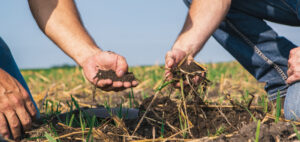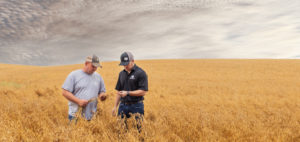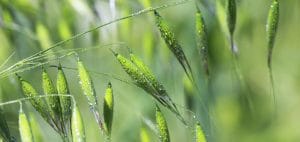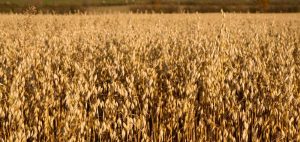From our blog
Category: Sustainability
Our Crop Specialist, Olivia, recently sat down with Kevin Elmy to ask him questions about his experience with regenerative agriculture. Kevin and his family farmed in eastern Saskatchewan, where they used regenerative agriculture practices in their operation to build soil health. Now, he consults with farms to adopt regenerative agricultural practices in North America and Australia and is based in Central Alberta.
OLIVIA: Where would you recommend starting if you were new to this? Is there anything a grower could still do this year to get started?
KEVIN: Absolutely. The best time to start regenerative ag practices is last year, and the next best time is today. The easiest thing to start with is creating a plan to have continuously growing roots throughout the growing season. Including something like Italian ryegrass in with your oats, in this case, is an easy thing to do. If you are concerned about nutrient tie up from growing a low-density biennial grass that is going to winter kill, throw in some subterranean clover with it. Now you have a nitrogen fixer that’s going to be feeding the Italian ryegrass and the oats, build your mycorrhizae, tie up the excess nitrates in the soil, and get that soil health process started.
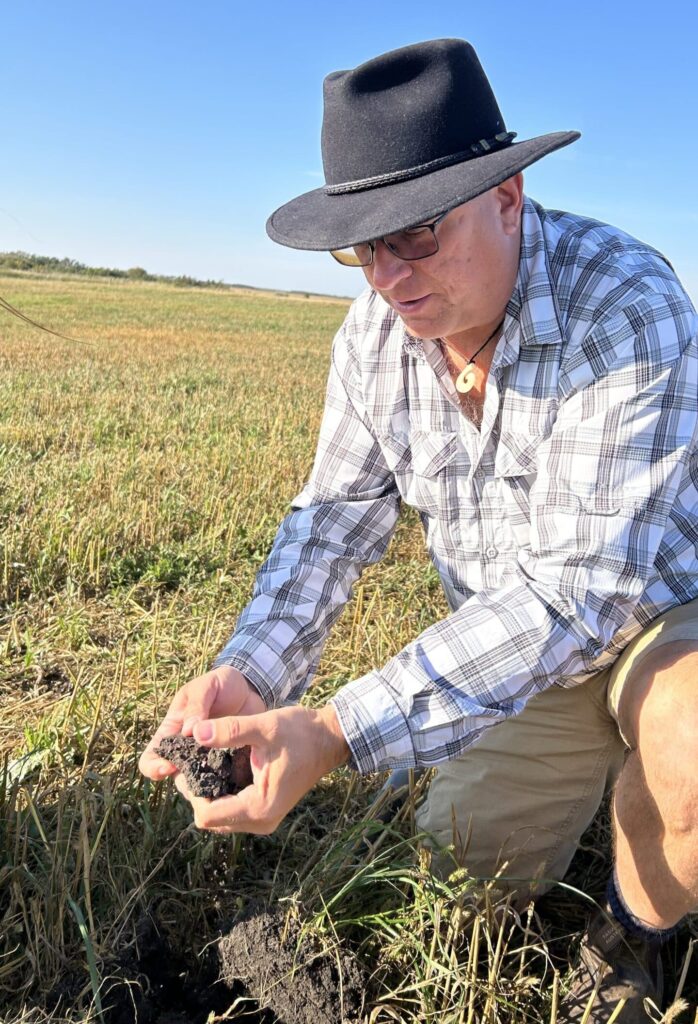
OLIVIA: Are there methods for seeding different cover crop species? Is it more important to consider the seed size or the moisture requirements of the cover crop seed when you’re making those decisions?
KEVIN: If we’re using something like teff grass, which has around 1.3 million seeds per pound, and we try seeding it down the same depth as oats (and it’s drier), you’ll never see a teff grass plant in the field, If we throw in some subterranean clover and Italian ryegrass with the oats, we need to change our seeding depth from 2 – 2.5 inches to 1-1.5 inches, as we will have some mortality from adding those smaller cover crop seeds in with the oat seed. That’s the easy button: one pass and you’re done. The other option is if we have good spring moisture when we’re seeding, we can broadcast Italian ryegrass and subterranean clover on before or after seeding the oats. If it is going to be dry, don’t broadcast the cover crop seed; try and put it into the soil with your cash crop seed. If the soil moisture looks good or we want to delay the seeding of our cover crop, then yes, we need that rain and moisture post-seeding.
When we’re seeding our oats and cover crop with it, we must reduce the seeding rate of our oats by around 15-20%. The oats at a high seeding rate cannot differentiate between a cover crop and a weed. To get these cover crops established properly, we need to cut those seeding rates back. That’s going to scare a lot of people, but it’s going to be something that once we have this system going, the entire system is going to work more efficiently than with a higher rate of the oats.

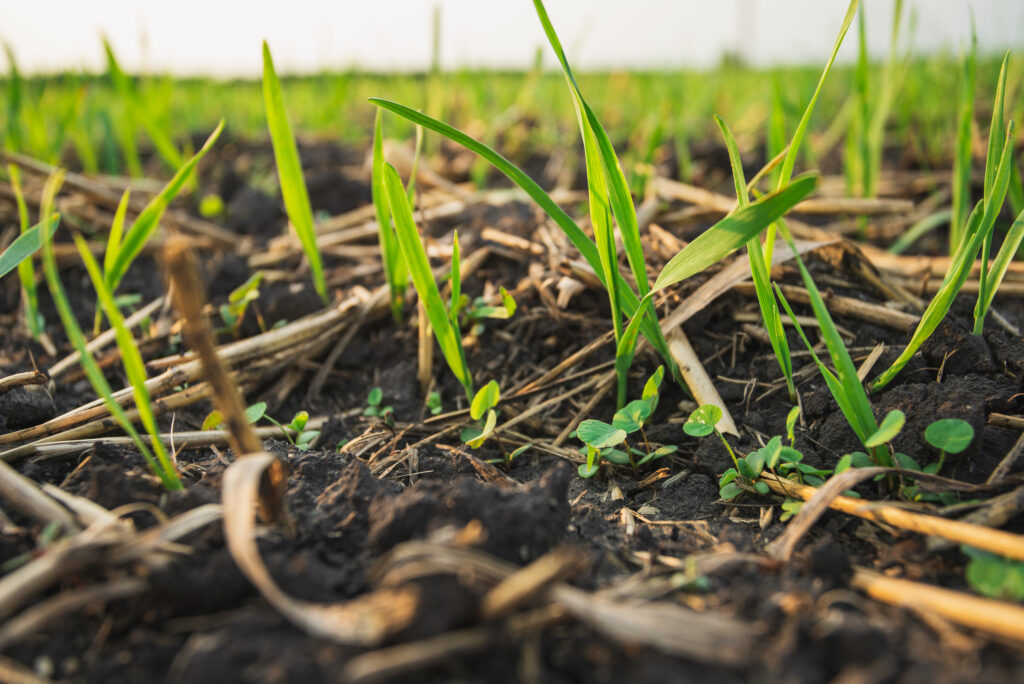
OLIVIA: Are there recommendations for cover crop seed mixtures that work particularly well?
KEVIN: I’m always looking to pick species that are going to be growing below the cutting bar of the crop we’re dealing with. If we’re leaving 12 inches of stubble, I want to pick the species that are going to grow less than 12 inches tall. Subterranean clover is a no brainer because it only grows one or two inches high. Italian rye grass takes about 40 days for it to get up and going, so it will remain underneath the main crop canopy. Unless you get a year where it doesn’t stop raining all summer, it’s going to be in the range of 2 to 4 inches tall underneath the canopy. Species like hairy vetch will vine up and grow into the top part of the canopy; that’s not going to be fun to manage. Putting in sunflowers, once again, they’re tall and going to pop up above the canopy. Stay away from the brassicas (and collards) in your crop until after harvest because they are scavengers and will take nutrients away from your oats. Post-harvest you can put turnips and radishes in, assuming you’re not going to canola after that. Go through and identify which species are going to be nice and low growing.
OLIVIA: Are there any tips for growers on how to reduce disturbance while planting?
KEVIN: One thing we did on our farm was use an air seeder. We went from using a spoon or a shovel opener and went to a hoe-type opener, so this way we were not throwing as much dirt around. We’re also slowing the speed of our tractor to 4-4.5 mph, which is significant when you’re typically going 5-6 mph.
OLIVIA: Are there ways that you can utilize tillage while still promoting soil health? And under what circumstances would you be using tillage to do so?
KEVIN: If we are getting large volumes of rain, we are developing a plow layer over time, so maybe we go in one time with a narrow seed opener. This will do a little tillage and open that up if we have hard soil. If we have excess trash on the surface [due to regen ag practices], we might need to till a little bit, but it must be, as one producer told me, surgical tillage. If my appendix were about to burst, I would not want the doctor to start the incision at my shoulder, get to my thigh and find the appendix. The surgeon needs to make a little incision where they need, take out that appendix, and close me up. Tillage is the same, do the minimum amount of disturbance we have to do and get out. The next thing is, after you do tillage, what are you doing after? If we are going to till, are we going to seed a cover crop after? Are we going to be putting down some humates? How are we going to get our soil and our management to the point where we do not have to till to solve a problem that was caused by tillage in the first place?
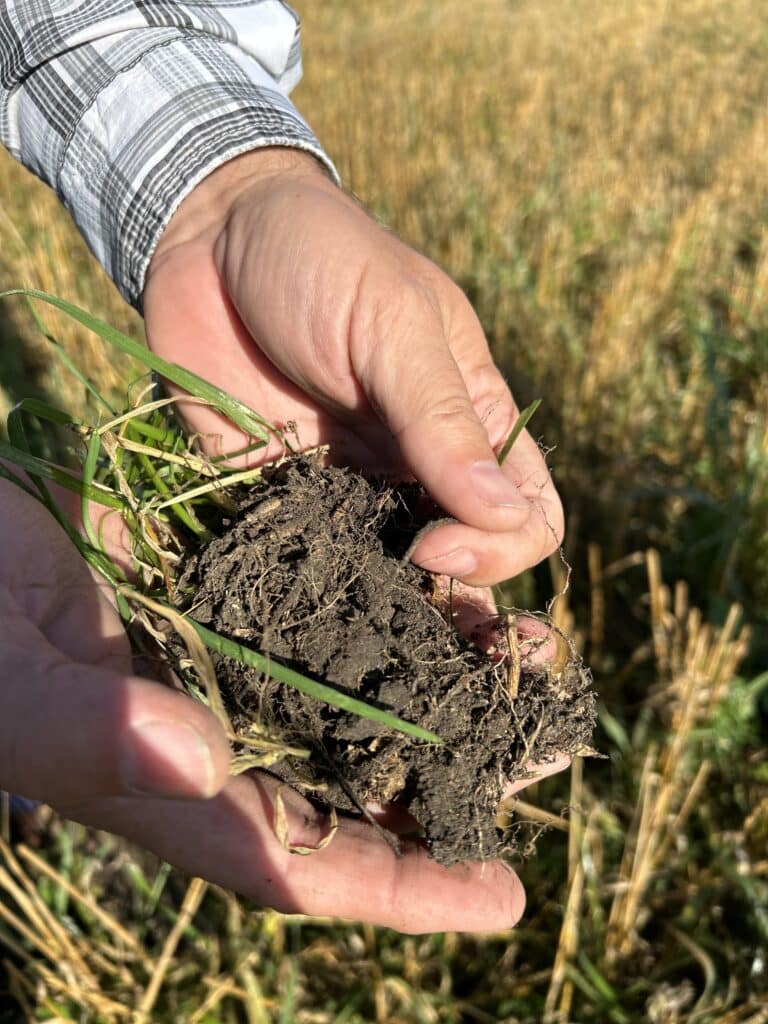
OLIVIA: What does planning fertility for regenerative farms look like? What kinds of products are out there to use for different operation types?
KEVIN: Nitrogen is easy to reduce. There are a lot of cases where you can quite easily cut back on your nitrogen if you have a legume in there, because the legume will share nitrogen throughout the growing season with that grass. When we can put foliar nitrogen on, it is 4.2 times more effective than putting it into the soil. We can put down some starter N, but then do foliar applications of nitrogen during the growing season, which is way more efficient. For phosphate reduction, we must build up soil biology first. Once we have that up and going, then we can start cutting back on phosphate and learning what triggers availability of phosphate in the soil. It is important to stay away from fungicides and reduce the salt effect of our fertilizers so we can reduce P input.
With biologicals, there are two main groups. There’s compost based, where it is either dry compost or a tea extract. The compost and extracts are adding more biology into your system. Or there are biostimulants, which are putting biological foods into the soil to stimulate the biology you have already. Which one should I use? If you have a highly biological system that is just tired, and this is more so in the cases of pastures and hay fields where we haven’t been tilling, then use biostimulants as the alarm clock to wake up the soil and get things going. When we look at our monoculture cropping system, we’re dealing with tight rotations and high synthetic inputs. What’s going to happen is they’re going to go into either deep dormancy or die and fall to background levels. In that case, going in with a very diverse product with different microbes in the soil: that is crucial. Our soil is very deficient in active fungi. I’m always working on developing systems to develop more fungi in our soil. When we get fungi, then we get good nematodes. We get good nematodes, then the bacteria are easy to manipulate. We can increase the populations of bacteria in the soil tenfold in four days. When we have functioning soils, we have good populations of both.
Grain Millers makes decisions based on shared values and invests in what is good - not just for us, but for the farmers we depend on, the customers we serve, and the world we all live in.
It's more than processing. It's our promise.
© 2024 Grain Millers, Inc.
